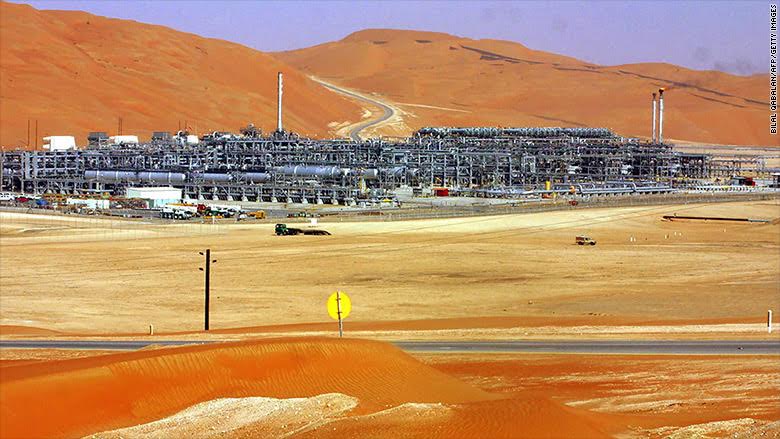Oil & Gas: How 2016 Events will Impact Procurement in 2017
Throughout 2016 there were many significant events that shaped the current state of the Oil & Gas industry. As the price of oil continued to plunge, world events hinted at a very slow recovery in the sector. Projects were put on hold, headcounts slashed, but production seemed to continue unabated. Some of the events that have had or will have a major impact in this space are:
the Oil & Gas industry. As the price of oil continued to plunge, world events hinted at a very slow recovery in the sector. Projects were put on hold, headcounts slashed, but production seemed to continue unabated. Some of the events that have had or will have a major impact in this space are:
- "Brexit" shook up the EU, continued financial chaos in Italy and Greece, and a general fear of the unknown led to declines in European markets. These events drained demand for oil, putting increased downward pressure on crude prices.
- Saudi Aramco, the largest producer, announced its intention to file for IPO this year. With a plan to go public in 2017, the IPO will value the company at around $2 trillion. Selling just 5% of the company would generate at least $100 billion in cash. Is this an early play by the Saudis to create liquidity to invest in more production? Currently, Aramco sits on around 270 billion barrels of proven reserves with production costs of less than $10 per barrel. Reports are that they intend to double their refining capacity, as seen by their move on the Port Arthur refinery complex. The Saudis want the other half that they don't already own as an anchor in the US to import and refine their crude. Aramco could prevent US shale oil from being refined in Port Arthur, putting a further dent into the US industry while seeing an increase in imports. A hedge, but not a strong one. Further investment activity was seen by Motiva's interest in the Lyondell refinery in Houston.- Recently we read a report about a new refinery being developed in Duval County, Texas that will create 1500 construction jobs for the $500 million project. This is clearly great news for the services and construction players looking to ramp up their teams.
- The massive discovery of oil and gas in the Wolfcamp shale of West Texas.
- BP plans to drill an exploratory well in the North Sea that may lead to increased development in the area. The British giant also announced plans to participate in up to 5 exploration wells plus up to 50 development wells in the North Sea, and plans to increase production there significantly.
- Glencore and the Qatar Investment Authority (one of the largest investors in Glencore) announced plans to buy a 19.5% stake in Rosneft for $11.3bb (BP already owns 19.75% of Rosneft). This was seen by many as an attempt by Moscow to balance its budget by selling assets during a time of western sanctions and an oil price fueled recession.
- The OPEC production cut deal seemed to polarize analysts - some suggest a price increase based on historical analysis, others site the presence of the shale players waiting in the wings as a reason to expect prices to remain the same or go lower. Either way, this appears to be the last ditch effort of a desperate club (see more below).
- 2016 seemed to be the year of the merger - GEOG-Baker Hughes, Spectra-Enbridge, Technip-FMC, Sunoco Logistics-ETP... too many to mention. It's safe to assume this will continue in 2017.
- US exports of shale to Asia are expected to continue to rise. With the 40 year ban on US exports lifted a year ago, BP and others have been pioneering new sea routes to Asia. Production cuts in Middle East and Russia are prompting Asian importers to look at long-haul routes as a better alternative to satisfy demand.
Procurement Points:
Procurement organizations have been tapped in the past year to help Oil & Gas companies stay afloat, and that responsibility has been answered with big moves. Many effectively used all of the cards in their hand - supplier price reductions, tighter procurement policies, capital projects pushed out, head count reductions, off-shoring of transactional roles, and eliminated IT project budgets. It's time to draw some new cards.
- The headline in 2017 will be partnering with the design and engineering teams in the business to drive price efficiencies and reduce complexity of future projects. The biggest gains here will be seen by immature procurement organizations - as teams increase their capabilities through software projects, skills building and internal collaboration. The gains will be much larger for those teams that have held back on investing in these areas. Mature organizations will find it harder to achieve significant wins with these techniques.
- Another card to be drawn will be process transformation. Some IT budgets will still be in limbo for the first half of the year, leaving procurement teams to focus on functional projects. This is a great time to evaluate your operational processes to ensure you are being as efficient as possible. Auctions were a huge part of 2016, and will be important in 2017 as well. Negotiating contracts with P2P systems in mind will be a huge win for Sourcing teams. If procurement is able to create contracts that are ready to be operationalized, they will be able to claim compliance in their catalog tools and drive real value.
- Major software players have begun to make investments in Direct Materials purchasing, easing integration between EAM systems and their P2P tools. Plant Maintenance, MRO, Inventory and VMI workflows are being integrated directly into P2P tools to enable the efficiencies of document automation and supplier networks. The focus in the past decade has really been on the Indirect space, and the software majors are now turning their attention to Directs, and we should begin to see procurement automation within the plant.
- New players are plugging holes in the classic procurement software model. “Engagement Layers” will be the rage in 2017. Procurement teams are looking to move past the metric of savings from category management and sourcing activity and are starting to engage directly with their customers in the business as well as with vendors. This space is ripe for disruption as procurement moves away from being a shared service to a trusted business partner delivering deeper value through demand planning and vendor management. Expect to see advancements in Collaboration, Automation and Integration.
- Mergers in the industry will invariably pit procurement teams against each other as executives look to trim costs out of the organization. Smart CPOs will make bold moves to set themselves apart from the competition.
If you have to pick a project for next year, it will be investing in software that enables collaboration with your direct purchasing team to drive efficiencies and savings in the design aspects of their projects. The best path to becoming the trusted business partner that we have all talked about will be to create opportunities for engagement. By working your way up the ladder and getting ahead of demand, procurement will finally have the opportunity to become proactive.
| Sean Sollitto | |
| Principal |
{{cta('b5a69d54-0671-4cae-8749-203341234ac0')}}
